Shopping Cart
Remove All Your shopping cart is currently empty
Your shopping cart is currently empty
Anti-Phospho-AMPK alpha 1 (Ser356) Polyclonal Antibody is a Rabbit antibody targeting Phospho-AMPK alpha 1 (Ser356). Anti-Phospho-AMPK alpha 1 (Ser356) Polyclonal Antibody can be used in FCM,IF,IHC-Fr,IHC-P,WB.
| Pack Size | Price | USA Warehouse | Global Warehouse | Quantity |
|---|---|---|---|---|
| 50 μL | $220 | 7-10 days | 7-10 days | |
| 100 μL | $374 | 7-10 days | 7-10 days | |
| 200 μL | $529 | 7-10 days | 7-10 days |
| Description | Anti-Phospho-AMPK alpha 1 (Ser356) Polyclonal Antibody is a Rabbit antibody targeting Phospho-AMPK alpha 1 (Ser356). Anti-Phospho-AMPK alpha 1 (Ser356) Polyclonal Antibody can be used in FCM,IF,IHC-Fr,IHC-P,WB. |
| Synonyms | wu:fa94c10, SNF1-like protein AMPK, Protein kinase AMP activated alpha 1 catalytic subunit, PRKAA1, PRKAA 1, p-AMPK alpha 1 (Ser356), p-AMPK alpha 1 (S356), MGC57364, MGC33776, kinase AMPK alpha1, im:7154392, hormone sensitive lipase kinase, HMG CoA reductase kinase, EC 2.7.11.1, cb116, C130083N04Rik, AMPKα1, AMPKα 1, AMPKalpha1, AMPKa1, AMPK-a, AMPK1, AMPK α1, AMPK α 1, AMPK AMPK-α1, AMPK alpha-1, AMPK alpha 1 chain, AMPK alpha 1 (p-Ser356), AMPK alpha 1 (p-S356), AMPK a1, AMPK 1, AMPK, AMP-activated protein kinase, catalytic, alpha-1, AMP-activate kinase alpha 1 subunit, AL024255, AI450832, AI194361, acetyl CoA carboxylase kinase, AAPK1, 5' AMP activated protein kinase catalytic subunit alpha 1, 5 AMP activated protein kinase catalytic alpha 1 chain, 5 AMP activated protein kinase alpha 1catalytic subunit |
| Ig Type | IgG |
| Reactivity | Human,Mouse (predicted:Rat,Dog,Cow,Horse,Sheep) |
| Verified Activity | 1. Paraformaldehyde-fixed, paraffin embedded (Human cervical carcinoma); Antigen retrieval by boiling in sodium citrate buffer (pH6.0) for 15 min; Block endogenous peroxidase by 3% hydrogen peroxide for 20 min; Blocking buffer (normal goat serum) at 37°C for 30 min; Antibody incubation with (phospho-AMPK alpha 1 (Ser356)) Polyclonal Antibody, Unconjugated (TMAB-01386) at 1:400 overnight at 4°C, followed by operating according to SP Kit (Rabbit) instructionsand DAB staining. 2. Paraformaldehyde-fixed, paraffin embedded (Mouse liver); Antigen retrieval by boiling in sodium citrate buffer (pH6.0) for 15 min; Block endogenous peroxidase by 3% hydrogen peroxide for 20 min; Blocking buffer (normal goat serum) at 37°C for 30 min; Antibody incubation with (phospho-AMPK alpha 1 (Ser356)) Polyclonal Antibody, Unconjugated (TMAB-01386) at 1:400 overnight at 4°C, followed by operating according to SP Kit (Rabbit) instructionsand DAB staining. 3. Paraformaldehyde-fixed, paraffin embedded (Mouse brain); Antigen retrieval by boiling in sodium citrate buffer (pH6.0) for 15 min; Block endogenous peroxidase by 3% hydrogen peroxide for 20 min; Blocking buffer (normal goat serum) at 37°C for 30 min; Antibody incubation with (phospho-AMPK alpha 1 (Ser356)) Polyclonal Antibody, Unconjugated (TMAB-01386) at 1:400 overnight at 4°C, followed by operating according to SP Kit (Rabbit) instructionsand DAB staining. 4. Sample: Hela (Human) CellLysate at 30 μg MCF-7 (Human) CellLysate at 30 μg Primary: Anti-phospho-AMPK alpha 1 (Ser356) (TMAB-01386) at 1/500 dilution Secondary: IRDye800CW Goat Anti-Rabbit IgG at 1/20000 dilution Predicted band size: 63 kDa Observed band size: 63 kDa 5. Sample: NIH/3T3 (Mouse) Cell Lysate at 30 μg Primary: Anti-phospho-AMPK alpha 1 (Ser356) (TMAB-01386) at 1/500 dilution Secondary: IRDye800CW Goat Anti-Rabbit IgG at 1/20000 dilution Predicted band size: 63 kDa Observed band size: 63 kDa 6. Blank control (black line): HepG2. Primary Antibody (green line): Rabbit Anti-phospho-AMPK alpha 1 (Ser356) antibody (TMAB-01386) Dilution: 1 μg/Test; Secondary Antibody (white blue line): Goat anti-rabbit IgG-AF488 Dilution: 0.5 μg/Test. Isotype control (orange line): Normal Rabbit IgG Protocol The cells were fixed with 4% PFA (10 min at room temperature) and then permeabilized with 90% ice-cold methanol for 20 min at-20°C, The cells were then incubated in 5% BSA to block non-specific protein-protein interactions for 30 min at room temperature. Cells stained with Primary Antibody for 30 min at room temperature. The secondary antibody used for 40 min at room temperature. 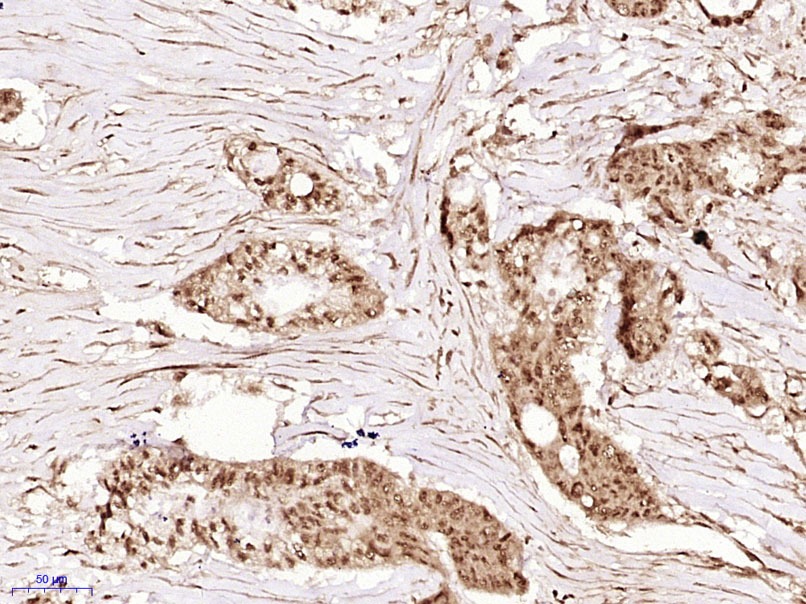 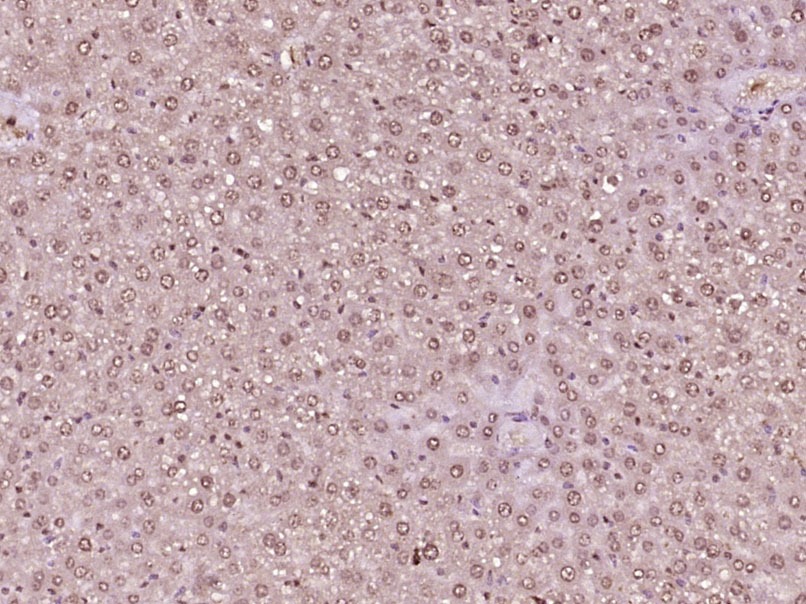 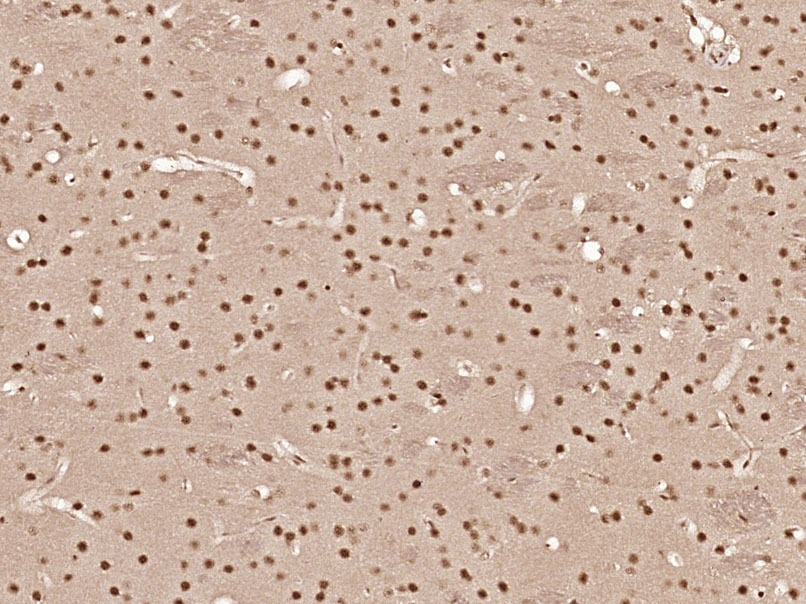 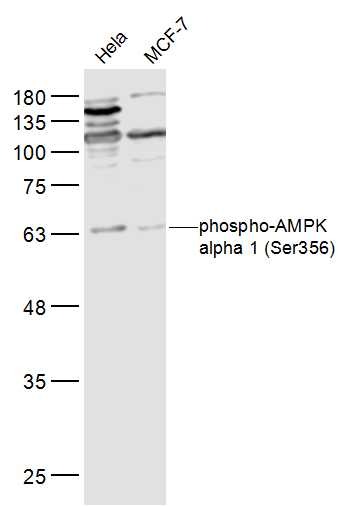 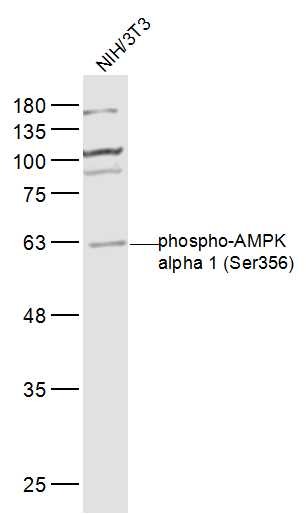 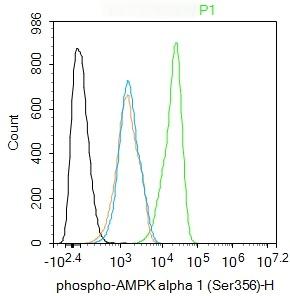 |
| Application | |
| Recommended Dose | WB: 1:500-2000; IHC-P: 1:100-500; IHC-Fr: 1:100-500; IF: 1:100-500; FCM: 1ug/Test |
| Antibody Type | Polyclonal |
| Host Species | Rabbit |
| Subcellular Localization | Cytoplasm. Nucleus. Note=In response to stress, recruited by p53/TP53 to specific promoters. |
| Tissue Specificity | Lens as well as other tissues. |
| Construction | Polyclonal Antibody |
| Purification | Protein A purified |
| Appearance | Liquid |
| Formulation | 0.01M TBS (pH7.4) with 1% BSA, 0.02% Proclin300 and 50% Glycerol. |
| Concentration | 1 mg/mL |
| Research Background | The protein encoded by this gene belongs to the ser/thr protein kinase family. It is the catalytic subunit of the 5'-prime-AMP-activated protein kinase (AMPK). AMPK is a cellular energy sensor conserved in all eukaryotic cells. The kinase activity of AMPK is activated by the stimuli that increase the cellular AMP/ATP ratio. AMPK regulates the activities of a number of key metabolic enzymes through phosphorylation. It protects cells from stresses that cause ATP depletion by switching off ATP-consuming biosynthetic pathways. Alternatively spliced transcript variants encoding distinct isoforms have been observed. [provided by RefSeq, Jul 2008] |
| Immunogen | KLH conjugated Synthesised phosphopeptide: human AMPK alpha 1 around the phosphorylation site of Ser356 |
| Antigen Species | Human |
| Gene Name | PRKAA1 |
| Gene ID | |
| Protein Name | 5'-AMP-activated protein kinase catalytic subunit alpha-1 |
| Biology Area | Integration of energy metabolism,Response to hypoxia,Metabolism,Integration of energy,Fatty acids,Hypoxia,Fatty acid oxidation,Cancer,Neurodegenerative disease,Amyloid,Other Kinases |
| Function | Catalytic subunit of AMP-activated protein kinase (AMPK), an energy sensor protein kinase that plays a key role in regulating cellular energy metabolism. In response to reduction of intracellular ATP levels, AMPK activates energy-producing pathways and inhibits energy-consuming processes: inhibits protein, carbohydrate and lipid biosynthesis, as well as cell growth and proliferation. AMPK acts via direct phosphorylation of metabolic enzymes, and by longer-term effects via phosphorylation of transcription regulators. Also acts as a regulator of cellular polarity by remodeling the actin cytoskeleton; probably by indirectly activating myosin. Regulates lipid synthesis by phosphorylating and inactivating lipid metabolic enzymes such as ACACA, ACACB, GYS1, HMGCR and LIPE; regulates fatty acid and cholesterol synthesis by phosphorylating acetyl-CoA carboxylase (ACACA and ACACB) and hormone-sensitive lipase (LIPE) enzymes, respectively. Regulates insulin-signaling and glycolysis by phosphorylating IRS1, PFKFB2 and PFKFB3. AMPK stimulates glucose uptake in muscle by increasing the translocation of the glucose transporter SLC2A4/GLUT4 to the plasma membrane, possibly by mediating phosphorylation of TBC1D4/AS160. Regulates transcription and chromatin structure by phosphorylating transcription regulators involved in energy metabolism such as CRTC2/TORC2, FOXO3, histone H2B, HDAC5, MEF2C, MLXIPL/ChREBP, EP300, HNF4A, p53/TP53, SREBF1, SREBF2 and PPARGC1A. Acts as a key regulator of glucose homeostasis in liver by phosphorylating CRTC2/TORC2, leading to CRTC2/TORC2 sequestration in the cytoplasm. In response to stress, phosphorylates 'Ser-36' of histone H2B (H2BS36ph), leading to promote transcription. Acts as a key regulator of cell growth and proliferation by phosphorylating TSC2, RPTOR and ATG1: in response to nutrient limitation, negatively regulates the mTORC1 complex by phosphorylating RPTOR component of the mTORC1 complex and by phosphorylating and activating TSC2. In response to nutrient limitation, promotes autophagy by phosphorylating and activating ULK1. AMPK also acts as a regulator of circadian rhythm by mediating phosphorylation of CRY1, leading to destabilize it. May regulate the Wnt signaling pathway by phosphorylating CTNNB1, leading to stabilize it. Also has tau-protein kinase activity: in response to amyloid beta A4 protein (APP) exposure, activated by CAMKK2, leading to phosphorylation of MAPT/TAU; however the relevance of such data remains unclear in vivo. Also phosphorylates CFTR, EEF2K, KLC1, NOS3 and SLC12A1. |
| Molecular Weight | Theoretical: 64 kDa. |
| Stability & Storage | Store at -20°C or -80°C for 12 months. Avoid repeated freeze-thaw cycles. |
| Transport | Shipping with blue ice. |
| Size | Quantity | Unit Price | Amount | Operation |
|---|

Copyright © 2015-2025 TargetMol Chemicals Inc. All Rights Reserved.